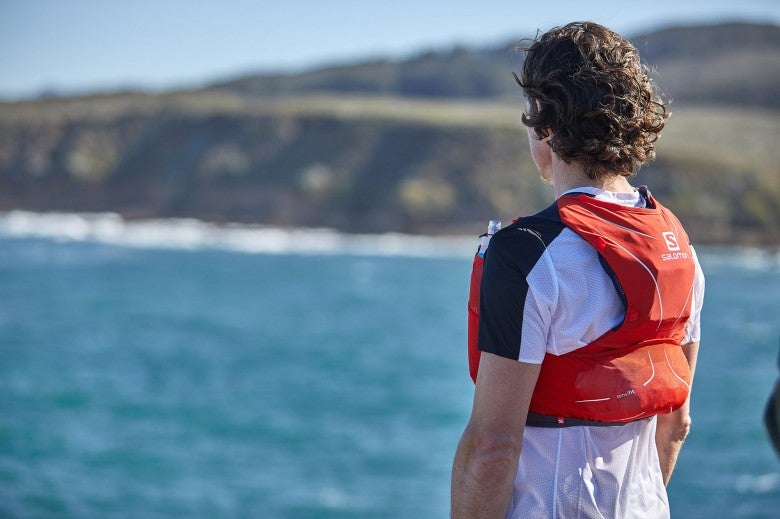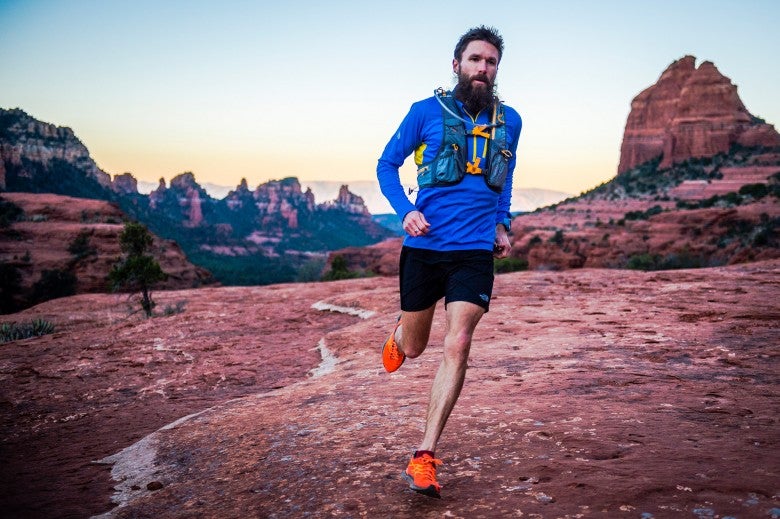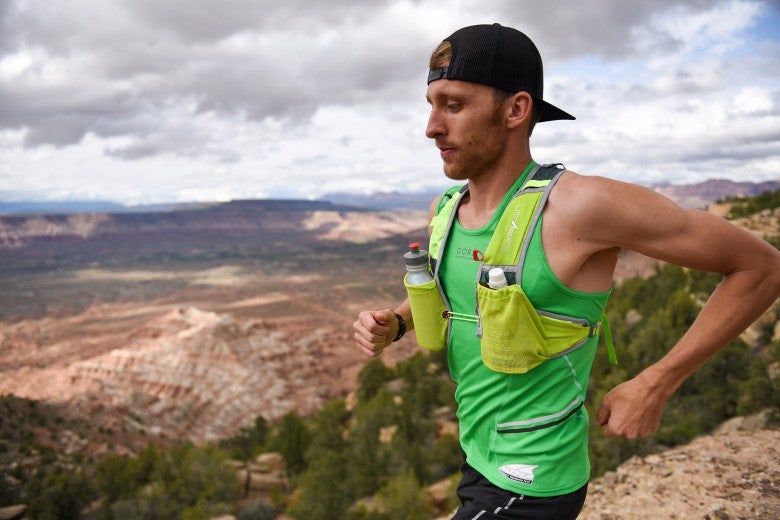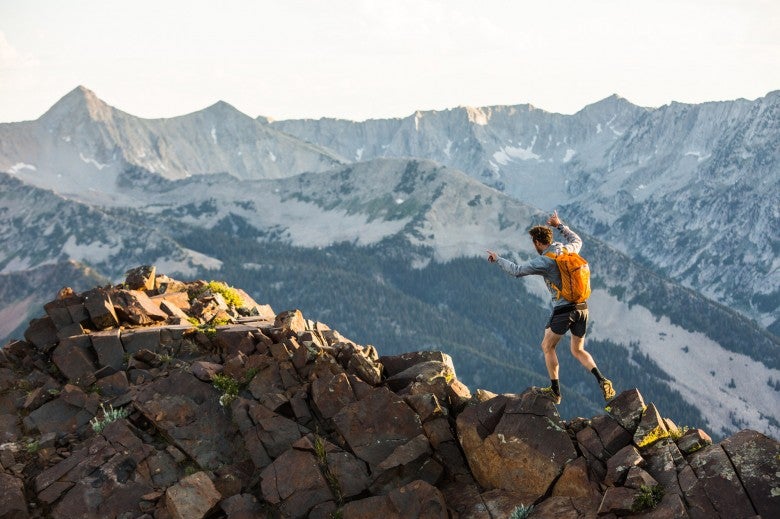Hydration Pack Buying Guide
How to Choose the Best Hydration Pack for Running

Hydration packs (also referred to as running vests) have become a symbol of freedom among trail runners, offering the ability to run outside for hours without the need to stop for water or supplies. Instead, you can keep all of your essentials within arm's reach and attached securely to your body, which prevents excessive bouncing or discomfort.
Getting thirsty? No problem. There are easily accessible water bottles in the holsters on your sternum or a hose from a 2-liter bladder strapped to your back. Need to fuel up with calories and nutrition? You can fit plenty of convenient gels into the front pockets or heartier bags of food in the rear. Did it really just start raining again? Good thing my lightweight jacket and gloves fit into any number of the rear compartments.
No matter your running experience, choosing the best hydration pack for your needs can boost both comfort and safety on long runs. These vests will vary based on three key elements: fluid capacity, pack capacity, and fit.

Fluid capacity, or the amount of water (or other hydration beverage) a pack can carry, is the main differentiating factor between vests. When referring to hydration capacity, we are specifically talking about the total amount of liquid a vest can hold using its included carrying containers. Often, packs will also be able to fit additional flasks, bottles, or reservoirs that can be purchased separately. The hydration capacity typically ranges from 500 mL to 2 litres and is carried in bottles, flasks, or reservoirs.

Pack capacity refers to the amount of cargo you can carry with you. Depending on the distance and location of your run, you might require extra layers of clothing, nutrition products, sunglasses, a headlamp, gloves, headwear, trekking poles, etc. The more gear you need to carry with you, the more space you will need in your pack.
Fit is also an important factor when selecting the best pack for you. An improperly fitting pack might rub and chafe, causing skin irritation as well as soreness and all-around discomfort. Some packs feature universal sizing which can be manually adjusted to your body shape, while others are offered in different sizes that are meant to have a more specific fit, similar to a piece of apparel. Like any article of clothing, the fit of a hydration vest is personal, and you may find it worthwhile to compare a couple of choices before you pick your perfect pack.
So how should it fit?
A well-fitting hydration pack will hug your body snugly without constricting arm movement or breathing. Regardless of your pack design, make sure it sits securely so that it doesn't bounce or rub while you're running.

Choosing Between the Options
It's simple to narrow down the options by asking yourself the right questions. You may not necessarily know all of the answers to these questions right now, but we suggest planning for a just little more than you think you might need. This will give some flexibility in case you decide to run longer or carry more.
Consider that your best choice will be influenced by the length of your run. A longer run will typically require more water, you might need to carry more nutrition or other gear, and you will want to make sure your pack fits securely for comfort over many hours. Ask yourself the following questions.
1. How much water will you need?
The amount of water you need to carry will depend on your total time exercising, as well as how long you will go between water availability. As a general rule, bring more than you think you will need, but as little as possible. A 2-liter bladder is typically the largest single water carrying option, and many packs now offer dual bottles in the front pockets as an alternative to a rear-carrying reservoir. The front bottles usually don't provide as much water storage, but they might be a more comfortable alternative for some runners. Keep in mind that extra reservoirs and bottles are available for sale separately, should you need to add additional fluid capacity later on.
In general, we suggest carrying about 2 litres of water for runs lasting longer than two hours. However, because water needs vary from runner to runner, it's important to know how much you will require for your conditions. For example, you will need more water in hotter conditions due to your body producing more sweat, while cooler weather may mean that you'll be fine with less.

2. How much gear are you carrying?
The amount of gear you need will depend on the running conditions and your personal preferences. Inclement weather may require additional layers, time of day determines if lighting will be necessary, and the length of your run will dictate how much nutrition you should carry. If you typically run for under three hours in fairly consistent weather conditions, you will likely find that a pack with a capacity of 5 litres or less should suffice. However, if your run is in constantly changing weather or is longer than four hours, you might prefer a larger pack with more storage options to accommodate extra clothing layers.
3. How much time will you spend in the pack?
While the fit is key for any pack at any length of run, it becomes more critical the longer you're running. In general, hydration packs within a given brand will differ based on pack capacity and features. However, some brands offer a separate, high-end option which is differentiated from the basic packs based on fit and materials. These high-end packs tend to use more comfortable fabrics and feature a dialed-in, personalized fit, usually at a higher price point. Frequently, these packs are offered in multiple sizes for an even more specific fit.
High-end packs and vests use softer, lighter, and often more durable fabrics, thereby extending their comfort and lifespan. These premium packs are ideal for runners who will be wearing them for more than a few hours at a time, or on a frequent basis (at least once a week). Even if you won't be running for many hours at a time, a high-end pack is ideal for runners with sensitive skin or those with specific fit needs.






